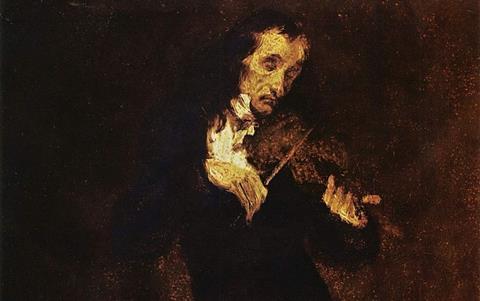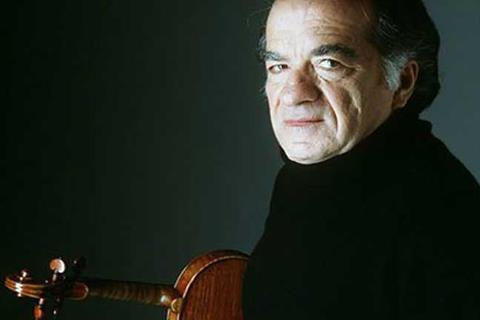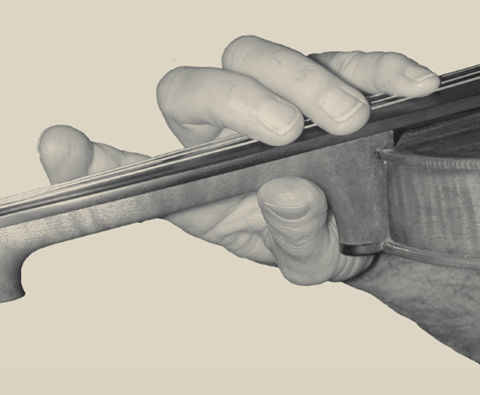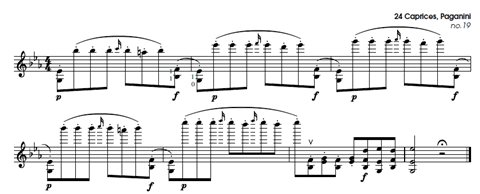Generations of violinists have tried to discover what it was that made Paganini so legendary. In this article from 2014, the late great Ruggiero Ricci shared his thoughts with Strad readers

Was Paganini’s renowned virtuosity the result of a carefully guarded secret, as he himself claimed, or did he acquire his technique in the conventional manner, through years of long hours of diligent practice? According to his friend Julius Schottky, as quoted in a Paganini biography by Leslie Sheppard and Herbert Axelrod, Paganini insisted that he had discovered a secret that gave its possessor mastery over the violin. Schottky writes:
Frequently, in my presence, Paganini has hinted that when he tired of his public career, he may one day be induced to communicate to the world a secret, the existence of which is little suspected by musical conservatories, a secret of such wonderful efficacy that by means of it a pupil may aspire to a degree of perfection unattainable by one who, pursuing the ordinary method, should devote ten years to practise the greater part of each day.
Although his contemporaries may have regarded his claim with some scepticism, Paganini was insistent. According to Schottky, Paganini would invariably repeat in a tone of sincerity: ‘I swear to you that what I say is the simple truth… you have the authority to publish my promise in the most unequivocal terms.’
Although the violin has been called ‘the instrument of the devil’, either because of its power to move, or perhaps because of its potential for technical pyrotechnics, it is not the instrument that is the problem but rather our failure to analyse its set-up. Tuned in perfect fifths and governed by the laws of physics with approximately 25 diminishing semitones per string, the violin seems an ideal candidate for systematisation of its technique. However, to date there is no organised playing method that takes advantage of this uniformity.

Our goal in left-hand technique should be to acquire it using the least possible practice time – that is, to develop a shortcut. Did Paganini’s secret refer to a new system or study method that he developed? This seems probable in view of the clues he left behind. He said: ‘When my system will be known, artists will commence to study the nature of the violin far more thoroughly, for it is an instrument a hundred times richer than is generally supposed. My discovery is not due to sheer accident, but the result of thorough research. One day, they will come to my system of studying.’
This quote suggests that by ‘secret’ Paganini meant a system, which could only have meant a shortcut. Can one acquire the technique necessary to play his caprices with less practice time? Is there a shortcut to acquiring a virtuoso technique? How did I stop this nagging question in my mind? For years, I experimented. I practised with gloves on; fixing the instrument against the wall to make it stable; lying on the floor; playing with one ear plugged; playing with the other ear plugged; playing in closets; sitting down.
It was only when I was 83 and couldn’t hold the violin any more due to shoulder and back pain that I first took off my chin rest. It was then that I found the answer. To my amazement, I had to change my whole left-hand technique. To discover Paganini’s secret, this is where I should have started.
Although Paganini never revealed his secret, he made two claims which seem to have been overlooked. He said: ‘There is only one position, and there is only one scale.’ I have carefully analysed these two important ideas and, in doing so, have begun to unravel the nature of the solution.
To discover more we must first understand the system by which Paganini played. In the era before chin rests were used, the violin was held by the left hand while the head was free to move. The hand was kept against the ribs of the violin and the fingers were extended backwards or forwards, both in front of and behind the thumb. From various accounts we know that this is how Paganini played. He would keep his wrist against the ribs and pivot his hand forwards and backwards in an arc. It is this old and forgotten system of playing within which Paganini developed his technique.
Spohr’s invention of the chin rest in the early 1800s entirely changed this system, taking the instrument from being hand held to being chin held. Freed from having to hold the violin, the left hand could move further around the instrument. Whereas the old system of playing favoured a cautious approach, avoiding leaps and jumps and using minimal motion, the chin rest led to the invention of shifting and positions, and a riskier style of playing using plenty of movement. Because the thumb moves with the fingers, the whole hand and arm move.
It is not my goal to change the current entrenched method. However, I wish to point out that with the invention of the chin rest we lost the best features of the old system and any insight into the nature of Paganini’s craft. We learnt to play efficiently the new way but with dire physical consequences to our necks, shoulders and backs.

Another aspect of playing that changed was posture. From various accounts, we know that Paganini held his violin at a downward angle – with his left elbow against his body – rather than held high, as we are taught today. With the hand fixed against the ribs in this way, there is hardly any arm movement and one moves with the least amount of motion. As an experiment, try playing the excerpt from Paganini’s Caprice no.19, shown below, keeping your hand against the violin ribs and pivoting in an arc.

Playing this passage the modern way requires extensive shifting and change of direction, both of which are risky. It is like jumping in the air and trying to land on the exact spot from which you started. So, rather than moving your entire arm from fingertip to shoulder ‘à la trombone’, use the ribs as a pied-à-terre, keeping your thumb as a base. Make an arc with your hand instead of reversing directions with the whole arm. Try playing bar 28 from the same caprice keeping your thumb fixed in third position and pivoting your hand:

With your hand against the ribs, the thumb remains in contact with the violin and acts as a pivot point for the rest of the hand, first position becoming a backwards extension. It is a good idea when making an extension to put the top-note finger down and extend back to the lower note rather than putting your hand in the lower position and extending up. With this in mind, try playing the passage from Caprice no.3, below.

The next example confirms that if we play with the hand resting against the violin, we don’t have to move the arm at all; the finger simply slides between the notes:

But when you hold the instrument with your chin you change position several times, from fourth to third, from third to second and from second to first position and the whole arm has to move, from fingertip to shoulder:

From the axiom that the shortest distance between two points is a straight line it follows that one should connect two points in one plane, rather than jumping through the air between them. It is essential to maintain contact with the violin at all times, since not having a good hold leads to insecurity: crawling is a safer way of getting from point A to point B. All movements should be fluid: a good test is to rest the violin scroll on a music stand and if the stand moves as you play, then the arm or the hand is shifting too abruptly.
If you hold the violin with your hand, you do not need a chin rest. However, it is not my intention to eliminate chin rests. We all learnt to play with one and they are here to stay. But if we use one we should use it correctly, and the same goes for shoulder rests. The more you bend your head to the left when you play, the sooner you will have shoulder problems. So, if you decide to use a shoulder rest, you should get one that you can regulate. Change the height to extend all the way from the base of the neck to the chin so that you bend your head to the left as little as possible.



































No comments yet